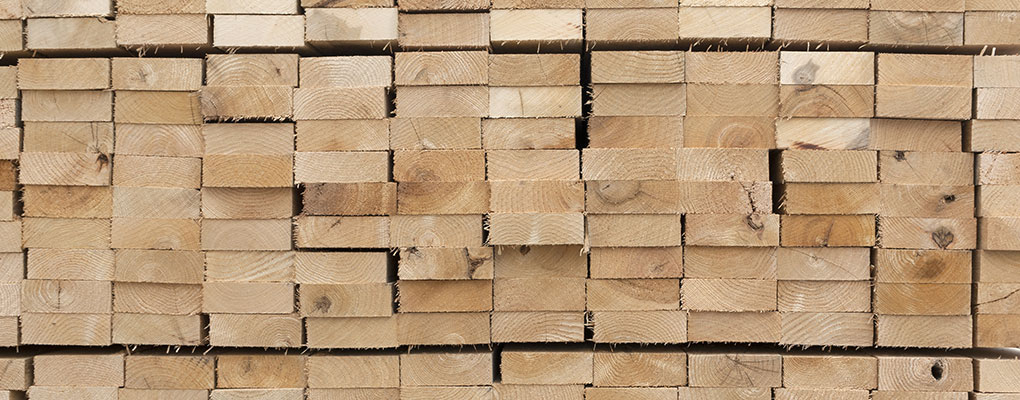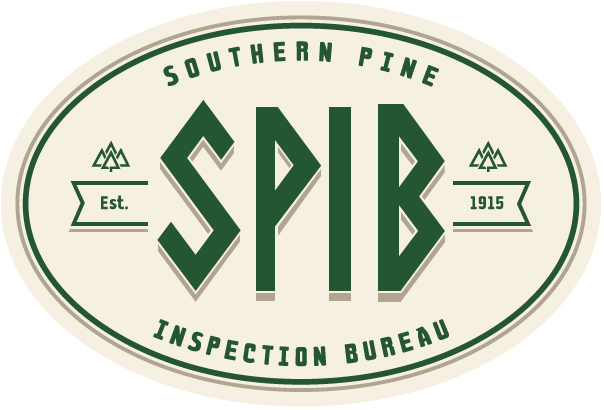
Appearance and Quality of Dimension Lumber
Often end users of Dimension Lumber complain that lumber from different suppliers does not appear to be of the same quality. It may look better or worse, yet the packages bear the same grade mark. The lumber could be graded correctly; however there are indeed some factors that can influence the overall appearance of lumber in a specific grade, – for better, or for worse. Remember the grading rules for Dimension Lumber were written primarily to control the strength of pieces within a grade, with only a limited consideration for appearance.
Grading Rules
The first thing to consider is the Grading Rules themselves. The Nation Grading Rule for Dimension Lumber (NGR) describes the worst case scenario for each defect and characteristic of dimension lumber allowed in each grade. Hence, the rules describe the poorest pieces permitted in a grade, and this fact alone can cause variation in the appearance of individual pieces within the grade. The grading rules limit the defects in each piece, not the piece itself. Consider the difference in appearance between a very good piece, such as a straight, dense piece of lumber with only one small edge knot slightly too large for No. 1. This piece will be graded as a No. 2, while another less dense piece with the maximum allowable skip, warp, wane and/or knots will also grade No. 2. Some No. 2 pieces will look different than others because of this.
The grade rule for No. 2 wane allows a maximum of 1/2 the face and 2/3 the edge for up to 1/4 the length – this is a good deal of wane. This generous wane allowance in No. 2 results from the fact that this amount of wane will not reduce the stress ratings published for No. 2 in the grade rules. Every piece of No. 2 lumber will not have the maximum allowable wane, and the variation between pieces with wane in the same grade can be quite large. This is the case for all defects limited to the rules.
Another rule that often impacts appearance is Skip. Skips are areas of the surface that fail to plane due to scant thickness or scant width and can make the appearance look poor; however, the skips have very little effect on strength or usability. Tight size tolerances and a little over drying can lead to skip. Mills need to focus on recovery that can lead to reducing rough lumber sizes. If sawing variances are too high, then skip dressing can become frequent.
Customer satisfaction is the dominant driving force in the marketability of lumber. The wide use of treated lumber for outdoor projects and the expansion of the big box retailers as the primary source of lumber for the weekend warrior has led to an increasing demand for lumber that’s produced and graded to look better than what the grading rules allow. Producers will manufacture lumber that is better than the rules allow to varying degrees. This will depend on the customer base and the market demands.
Raw Material
The quality of the raw material will also affect the appearance of the finished product. Standing timber comes in many forms. Individual trees and stands of trees vary widely in size, growth rate, and species. If a mill occasionally encounters lower quality logs, then some of the resulting finished product will reflect this. For example, on one end of the quality spectrum you could have poorly managed plantations with lower quality logs. The lumber produced from these trees will be more likely to have an increased frequency of knots and other natural defects. On the other end of the spectrum, lumber produced from properly managed plantations will have less natural defects and make better lumber. Lumber graded from these trees will look quite good.
Manufacturing and Drying Practices
The appearance of lumber within a grade can also be influenced by mill’s quality process and its commitment to making a good product. Poor bucking, sawing, edging, trimming, stacking and drying can heavily influence the appearance of the finished product. The finished product will contain a much higher percentage of skip, wavy dressing, off sets, bites, warp, and lumber with higher moisture content and/or over dried lumber. The graders may grade out the pieces that will not make the grade but the percentage of these undesirable defects that do make the grade will be higher than lumber produced at a well-maintained facility with modern technology, highly skilled operators, and high-end quality control procedures. This is one reason manufacturers of dimension lumber constantly strive to improve these processes, it is to enhance the finished product in terms of appearance and conformance to the rules.
Grade separations at the producer’s site
The combination of grades sorted and sold by the manufacturer can certainly influence the appearance of a particular grade. When higher grades are separated from lower grades the lower grades will not look quite as good. They can be quite usable and still be of acceptable appearance when graded correctly, but that won’t look the same as grades where the higher grade is included. For example, if one mill is separating No. 1 and No. 2, then the No. 1 will be removed from the No. 2. On the other hand, if they are not separating the grades then each pack will have a significant percentage of pieces with smaller knots, less wane, skip, warp, etc.
Packaging Practices
Care and attention to packaging will often influence the appearance of lumber that is of the same grade and quality. For example, a package that is square and tight, with evenly aligned strapping and with the grade, size, and length accurately identified on placards that are easy to read and placed appropriately, will make a good first impression. Packs of lumber with square bright ends, and with legible and evenly placed grade stamps on every piece will be instantly perceived as superior quality lumber. In fact if the very same pieces are packaged poorly, the perception of quality will diminish.
Learn More
Just like buying quality clothes, cars, electronics or any other items that we purchase and use on a routine basis, to get quality at a fair price requires some consideration of the factors affecting product quality. Understanding the various grades of dimension lumber that are available, their intended uses, the grade separations made at the manufacturing site, the quality of the raw material used, and the quality of the producing facilities will all help you better understand why lumber of the same grade can look quite different in terms of appearance.
The Dimension Lumber grades for Southern Yellow Pine that are available, their general appearance, and the intended uses are described here
For Western Species, descriptions click here
For Canadian species click here
To learn more about how Dimension Lumber is graded, and to fully understand how the grading rules are applied to each piece, visit the SPIB eLearning Grading Courses for Dimension Lumber at http://www.spib.org/wood-services/elearning. Check it out. These courses offer information and instruction previously available only to the lumber graders at a producing mill. These courses will give you valuable insight and understanding of how dimension lumber is graded.

